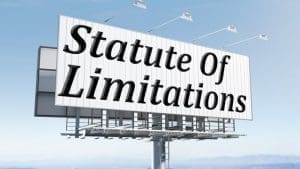Creating Time Management Systems for Busy Legal Practitioners
Busy legal practitioners frequently ask, “What time management systems actually work for attorneys juggling multiple cases and client demands?” The answer lies not in working longer hours, but in developing systematic approaches that maximize productivity while maintaining the high standards clients expect from their legal counsel.
Modern legal practice demands more than just exceptional legal knowledge—it requires sophisticated time management strategies that can adapt to the unpredictable nature of litigation, client emergencies, and court deadlines. Legal professionals who master these systems often discover they can increase their billable hours while reducing stress and improving work-life balance.
The legal profession has undergone significant transformation in recent years, with technology reshaping how attorneys approach their daily workflows. Research indicates that lawyers typically spend only 28 percent of their workday on actual billable activities, leaving substantial room for improvement through better legal productivity systems. This inefficiency costs firms thousands of dollars annually and contributes to attorney burnout across the profession.
Successful legal practitioners understand that effective time management extends beyond simple scheduling. It encompasses strategic planning, client communication protocols, workflow optimization, and the intelligent use of technology to automate routine tasks. The most productive attorneys develop comprehensive systems that address every aspect of their practice, from initial client intake through case resolution.
How Do Time Management Challenges Specifically Impact Legal Practitioners?
Legal professionals face unique time management obstacles that distinguish their challenges from other industries. Unlike business professionals who may work with predictable schedules, attorneys must constantly adapt to court calendars, emergency client needs, and case developments that can disrupt even the most carefully planned day.
The billable hour requirement creates additional pressure, as attorneys must not only complete their work efficiently but also accurately track and document their time for client billing purposes. This dual responsibility often leads to administrative burdens that consume valuable hours without generating revenue for the firm.
Court-imposed deadlines add another layer of complexity to legal time management. Missing a filing deadline can have catastrophic consequences for clients, creating an environment where attorneys feel compelled to overcommit their time rather than risk professional liability. This mindset frequently results in inefficient work patterns and excessive stress.
Client expectations have evolved significantly, with many expecting immediate responses to communications and constant updates on case progress. Managing these expectations while maintaining professional boundaries requires sophisticated client relationship management systems that many practitioners struggle to implement effectively.
The diverse nature of legal work also complicates time management efforts. A single attorney might spend their morning researching complex constitutional issues, their afternoon in settlement negotiations, and their evening preparing for the next day’s court appearance. Each activity requires different mental approaches and preparation methods, making it challenging to develop consistent workflows.
What Fundamental Principles Should Guide Legal Time Management Systems?
Effective time management for attorneys begins with understanding several core principles that successful practitioners consistently apply. These foundational concepts provide the framework for developing more specific strategies and systems.
Priority-based task allocation represents the cornerstone of legal time management. Attorneys must learn to distinguish between truly urgent matters that require immediate attention and important tasks that contribute to long-term success. The most effective practitioners use systematic approaches to evaluate each task’s impact on client outcomes and firm profitability.
Value-based time allocation ensures that attorneys focus their energy on activities that generate the highest return for both clients and the firm. This might mean spending more time on complex legal research that could significantly impact a case outcome rather than perfecting routine correspondence that provides minimal value.
Energy management often proves more important than pure time management for legal professionals. Understanding personal productivity patterns allows attorneys to schedule their most challenging work during peak energy periods while reserving routine tasks for times when concentration naturally wanes.
Systematic workflow development prevents attorneys from constantly reinventing their approach to similar tasks. Creating standardized processes for common activities like client intake, document review, and case preparation reduces decision fatigue and improves consistency across all work product.
Buffer time integration acknowledges the unpredictable nature of legal practice by building flexibility into schedules. Experienced attorneys typically reserve 20-25 percent of their available time for unexpected developments, emergency client needs, and tasks that take longer than initially estimated.
How Can Legal Professionals Implement Effective Prioritization Systems?
The Eisenhower Matrix provides a powerful framework for legal task prioritization, helping attorneys categorize their responsibilities based on urgency and importance. This system divides tasks into four distinct categories that guide decision-making throughout the day.
Urgent and important tasks typically include court deadlines, client emergencies, and time-sensitive negotiations. These activities demand immediate attention and often cannot be delegated to others. Effective attorneys minimize items in this category through better planning and earlier action on important matters.
Important but not urgent tasks encompass strategic planning, professional development, and relationship building activities that contribute to long-term success. Many attorneys struggle with this category because these tasks lack immediate deadlines, yet they often determine career trajectory and firm growth.
Urgent but not important activities frequently include interruptions, certain meetings, and administrative requests that feel pressing but provide limited value. Learning to delegate or decline these tasks without damaging professional relationships requires skill and confidence that develops over time.
Neither urgent nor important tasks should be eliminated from attorney schedules whenever possible. These activities often represent time-wasting habits or obligations that provide no meaningful benefit to clients or career advancement.
Time blocking techniques complement prioritization systems by allocating specific periods for different types of work. Successful attorneys often designate morning hours for complex legal analysis when their mental energy peaks, while reserving afternoon periods for client communications and routine administrative tasks.
The key to effective time blocking lies in protecting these designated periods from interruptions. This might require training support staff to handle routine inquiries independently or establishing specific office hours when colleagues can seek consultation on non-urgent matters.
What Role Does Technology Play in Modern Legal Time Management?
Technology adoption has revolutionized legal practice efficiency, offering tools that can dramatically reduce administrative burdens while improving accuracy and client service. Modern legal professionals who embrace these innovations often discover significant competitive advantages over practitioners who rely solely on traditional methods.
Practice management software integrates multiple functions into cohesive systems that streamline daily operations. These platforms typically combine case management, document storage, billing, and client communication tools, reducing the time attorneys spend switching between different applications and maintaining separate databases.
Time tracking applications help attorneys capture billable hours more accurately while providing valuable insights into productivity patterns. Many modern systems use artificial intelligence to suggest time entries based on calendar events and document activity, reducing the administrative burden of manual time recording.
Document automation tools can generate standard legal documents by populating templates with client-specific information. This technology significantly reduces drafting time for routine documents while maintaining consistency and reducing errors that might occur during manual preparation.
Cloud-based storage systems enable attorneys to access case files and documents from any location, supporting flexible work arrangements while ensuring that important information remains available during travel or court appearances. Security features in modern cloud platforms often exceed what most law firms can implement independently.
Artificial intelligence applications are increasingly sophisticated, offering capabilities like contract analysis, legal research assistance, and document review automation. Early adopters report time savings of 40 percent or more on certain tasks, allowing them to focus on higher-value activities that require human judgment and creativity.
Voice recognition software allows attorneys to create documents and communications through dictation, often proving faster than traditional typing for many practitioners. Modern systems demonstrate remarkable accuracy and can integrate with other practice management tools for seamless workflow integration.
How Should Legal Practitioners Structure Their Daily Workflows?
Successful daily workflow management begins with establishing consistent routines that create predictability within the inherently unpredictable nature of legal practice. The most productive attorneys typically start each day with a structured planning session that reviews priorities, deadlines, and available resources.
Morning planning sessions should include reviewing the day’s calendar, assessing progress on ongoing matters, and identifying potential obstacles that might disrupt planned activities. This proactive approach allows attorneys to make necessary adjustments before problems arise and ensures that critical deadlines receive appropriate attention.
Task batching strategies involve grouping similar activities together to minimize mental switching costs and maximize efficiency. For example, attorneys might designate specific periods for returning phone calls, reviewing documents, or conducting legal research rather than scattering these activities throughout the day.
Energy-based scheduling aligns challenging tasks with personal peak performance periods. Most people experience predictable energy fluctuations throughout the day, and successful attorneys learn to schedule their most demanding work when they naturally feel most alert and focused.
Communication management requires establishing specific times for checking and responding to emails rather than allowing constant interruptions throughout the day. Many productive attorneys check email only three or four times daily, responding immediately to urgent matters while scheduling responses to routine inquiries.
Workflow automation can handle many routine tasks without attorney intervention. This might include automated client intake processes, document generation systems, or reminder systems that ensure important deadlines receive timely attention.
What Delegation Strategies Work Best for Legal Professionals?
Effective delegation in law firms requires understanding which tasks can be appropriately assigned to others while maintaining quality control and professional responsibility compliance. Many attorneys struggle with delegation because they fear losing control or believe they can complete tasks more quickly themselves.
Paralegal utilization represents one of the most cost-effective delegation strategies available to legal practitioners. Experienced paralegals can handle substantial portions of case preparation, research, and client communication under appropriate attorney supervision, freeing lawyers to focus on activities that require licensed professional judgment.
Administrative task delegation includes activities like scheduling, document formatting, and routine correspondence that consume significant attorney time without requiring legal expertise. Training support staff to handle these responsibilities effectively often requires initial time investment but generates substantial long-term productivity gains.
Legal research delegation can work effectively when attorneys provide clear parameters and expectations. Junior associates or experienced paralegals can often handle preliminary research phases, allowing senior attorneys to focus on analyzing results and developing legal strategies.
Client communication delegation requires careful consideration of professional responsibility rules and client expectations. While support staff can handle routine status updates and scheduling, attorneys must maintain personal involvement in substantive legal discussions and strategic communications.
Quality control systems ensure that delegated work meets firm standards while protecting client interests. This typically involves establishing review processes, providing clear instructions, and maintaining regular communication with team members handling delegated responsibilities.
How Can Legal Professionals Optimize Their Client Communication Processes?
Efficient client communication systems balance client service expectations with attorney productivity requirements. Modern clients expect regular updates and prompt responses while attorneys need to manage communication demands that can otherwise consume entire days.
Proactive communication strategies often prove more efficient than reactive approaches. Sending regular case updates at predetermined intervals typically generates fewer client inquiries than waiting for clients to request information. Many attorneys find that weekly or bi-weekly status reports significantly reduce interruptions.
Communication scheduling establishes specific times when attorneys are available for client calls and consultations. This approach allows for better planning while ensuring that clients receive appropriate attention. Many successful practitioners designate specific afternoon hours for client communications while protecting morning periods for complex legal work.
Automated communication systems can handle routine client interactions like appointment confirmations, deadline reminders, and status updates. These systems free attorneys from administrative tasks while ensuring that clients receive timely information about their cases.
Response time expectations should be clearly established and communicated to clients during initial consultations. Setting realistic expectations about response times for different types of communications helps prevent misunderstandings while allowing attorneys to manage their schedules more effectively.
Documentation systems ensure that all client communications are properly recorded and accessible to relevant team members. This prevents duplication of efforts and ensures continuity of service even when primary attorneys are unavailable.
What Document Management Systems Support Legal Productivity?
Effective legal document management systems provide organized, secure, and easily accessible storage for the vast amounts of information generated during legal representation. Poor document organization can waste hours of attorney time and potentially compromise client service quality.
Cloud-based storage solutions offer advantages over traditional filing systems by providing remote access, automatic backup, and advanced search capabilities. Modern legal cloud platforms typically include security features specifically designed to meet attorney confidentiality requirements while supporting collaborative work environments.
Naming conventions and folder structures should follow consistent patterns that make sense to all team members. Developing firm-wide standards for file organization prevents confusion and ensures that important documents can be located quickly when needed.
Version control systems become critical when multiple team members work on the same documents. These systems track changes, maintain revision histories, and prevent the confusion that can arise when outdated document versions circulate among team members.
Document automation tools can generate standard forms and pleadings using template systems that populate with client-specific information. This approach reduces drafting time while maintaining consistency and accuracy across similar documents.
Search functionality should be robust enough to locate documents using various criteria including content, dates, case numbers, or client names. Advanced search capabilities can dramatically reduce time spent looking for specific information within large case files.
How Should Legal Practitioners Handle Interruptions and Unexpected Demands?
Managing interruptions in legal practice requires balancing accessibility with productivity protection. Legal practitioners must remain available for genuine emergencies while creating boundaries that preserve time for focused work on complex matters.
Emergency protocols should distinguish between true emergencies requiring immediate attention and urgent-seeming matters that can wait for appropriate response times. Training support staff to make these distinctions can protect attorney focus time while ensuring that critical issues receive prompt attention.
Office hours designation creates predictable times when attorneys are available for consultations and questions from colleagues and staff. This approach concentrates interruptions into specific periods rather than allowing them to fragment the entire day.
Focus time protection might involve closing office doors, using “do not disturb” signals, or working from alternative locations when complex analysis requires sustained concentration. The most productive attorneys often protect 2-3 hour blocks daily for uninterrupted work on challenging tasks.
Communication boundaries help manage client and colleague expectations about availability. This might include establishing response time standards for different types of communications or designating specific channels for emergency contact.
Interruption documentation can reveal patterns that suggest systemic solutions. If certain types of interruptions occur frequently, attorneys might benefit from creating resources, training materials, or process improvements that prevent future disruptions.
What Financial Benefits Result from Improved Legal Time Management?
Enhanced law firm profitability often results directly from improved time management systems. When attorneys capture more billable hours and work more efficiently, both individual compensation and firm revenues typically increase substantially.
Billable hour optimization represents the most direct financial benefit of better time management. Research suggests that even capturing one additional billable hour per week can generate $12,000 annually for attorneys billing at $250 per hour, demonstrating the significant impact of small improvements.
Operational efficiency improvements reduce overhead costs while improving client service quality. When attorneys complete work more quickly without sacrificing quality, firms can handle larger caseloads with existing staff or reduce the need for overtime and temporary assistance.
Client satisfaction improvements often result from better communication and more efficient case handling. Satisfied clients typically provide more referrals and return for additional legal services, generating revenue growth that compounds over time.
Error reduction through systematic approaches can prevent costly mistakes that might require significant time to correct or could result in malpractice claims. The financial protection provided by consistent, well-organized workflows often exceeds the investment required to implement these systems.
Competitive advantages emerge when firms can provide faster service, more accurate estimates, and better communication than competitors. These advantages often allow firms to command premium pricing while building stronger client relationships.
How Can Legal Professionals Maintain Work-Life Balance Through Time Management?
Sustainable work-life balance for attorneys requires intentional system design that protects personal time while meeting professional obligations. Many legal professionals discover that better time management actually creates more opportunities for personal activities rather than requiring additional work hours.
Boundary establishment involves creating clear separations between work and personal time. This might include designated hours when attorneys do not check email, specific days reserved for family activities, or policies about weekend work that preserve personal relationships.
Efficiency improvements often provide the foundation for better work-life balance by allowing attorneys to complete necessary work in fewer hours. When systems eliminate wasted time and streamline routine tasks, practitioners can maintain professional excellence while preserving personal time.
Stress reduction techniques integrated into daily workflows can prevent burnout while maintaining productivity. This might include scheduled breaks, physical activity periods, or mindfulness practices that help attorneys manage the intense demands of legal practice.
Vacation planning requires systematic preparation to ensure that client needs are met while attorneys take necessary time away from practice. Effective systems include delegation protocols, coverage arrangements, and communication plans that maintain client service during attorney absences.
Long-term sustainability considerations should guide time management system development. Systems that depend on unsustainable work patterns eventually fail, while approaches that support attorney well-being typically generate better long-term results for both practitioners and their clients.
What Metrics Should Legal Practitioners Use to Measure Time Management Success?
Effective performance measurement systems provide objective feedback about time management improvements while identifying areas requiring additional attention. The most useful metrics focus on outcomes that matter to both attorneys and their clients.
Billable hour ratios compare actual billable time to total working hours, providing insights into productivity patterns and identifying opportunities for improvement. Many successful attorneys track this metric weekly to ensure they maintain efficient work patterns.
Client satisfaction scores often reflect the quality of time management systems since better organization typically improves communication, reduces errors, and enhances service delivery. Regular client feedback can reveal whether system improvements translate into better client experiences.
Revenue per hour measurements help attorneys understand whether they are focusing their time on high-value activities. This metric can guide decisions about which types of work to pursue and which tasks might be better delegated or declined.
Case completion times provide insights into workflow efficiency and can help attorneys provide more accurate estimates for future similar matters. Tracking these metrics over time often reveals improvement trends and identifies particularly efficient or problematic case types.
Stress level assessments, while subjective, provide important feedback about system sustainability. Time management approaches that reduce stress while maintaining productivity typically prove more sustainable than methods that increase efficiency at the cost of attorney well-being.
How Should Legal Practitioners Adapt Their Time Management Systems Over Time?
Successful adaptive time management recognizes that effective systems must evolve as practice areas change, technology advances, and career responsibilities shift. Static approaches often become less effective over time, while flexible systems can improve continuously.
Regular system evaluation should occur at predetermined intervals to assess effectiveness and identify improvement opportunities. Many attorneys find that quarterly reviews provide sufficient frequency to make necessary adjustments without excessive administrative burden.
Technology updates require ongoing attention as new tools become available and existing systems improve. Early adoption of beneficial technologies can provide competitive advantages, while delayed adoption might result in inefficiencies that accumulate over time.
Practice evolution accommodation ensures that time management systems adapt to changing case types, client bases, and professional responsibilities. Systems that work well for junior associates might require substantial modification for senior partners with different obligations and opportunities.
Feedback integration from colleagues, clients, and support staff can reveal blind spots and improvement opportunities that might not be apparent to individual practitioners. Creating formal mechanisms for collecting and implementing feedback often accelerates system improvement.
Professional development considerations should influence time management system design as attorneys advance in their careers. Systems that support learning, networking, and skill development typically provide better long-term value than approaches focused solely on short-term efficiency.
Conclusion
Creating effective time management systems for busy legal practitioners requires thoughtful integration of proven strategies, appropriate technology, and systematic approaches that address the unique challenges of legal practice. The most successful attorneys develop comprehensive systems that encompass prioritization, delegation, communication management, and workflow optimization while maintaining the flexibility necessary to adapt to the unpredictable nature of legal work.
The evidence clearly demonstrates that attorneys who implement structured time management approaches typically experience significant improvements in both professional effectiveness and personal satisfaction. These improvements often translate into enhanced client service, increased profitability, and better work-life balance—outcomes that benefit all stakeholders in the legal profession.
Technology continues to offer new opportunities for efficiency gains, but successful implementation requires understanding which tools provide genuine value versus those that simply add complexity to already demanding schedules. The most effective practitioners carefully evaluate new systems and adopt those that demonstrably improve their ability to serve clients while managing their professional responsibilities.
The conservative principle of building upon proven foundations while carefully adapting to changing circumstances applies directly to time management system development. Rather than pursuing dramatic changes that might disrupt effective practices, successful attorneys typically implement incremental improvements that compound over time to generate substantial benefits.
Ultimately, effective time management for legal practitioners serves not just individual career success but the broader goal of providing excellent client service while maintaining the high professional standards that define the legal profession. Attorneys who master these systems position themselves to thrive in an increasingly competitive environment while preserving the personal well-being necessary for sustained excellence throughout their careers.
- AI-Powered Contract Management Technology for Legal Document Analysis
- Masterful Time Management Strategies for Legal Professionals
- Ten Essential Time Management Tips for Legal Professionals
- Time Management Strategies for Lawyers to Boost Efficiency
- Mastering Time Management for Lawyers: Proven Strategies
- Time Management Tools and Strategies for Legal Professionals
- Time Management Tactics for Busy Lawyers and Attorneys
- Best Time Management Apps for Busy Lawyers
- How Government Lawyers Can Do More in Less Time
- Ten Time Management Tips for Legal Professionals


















